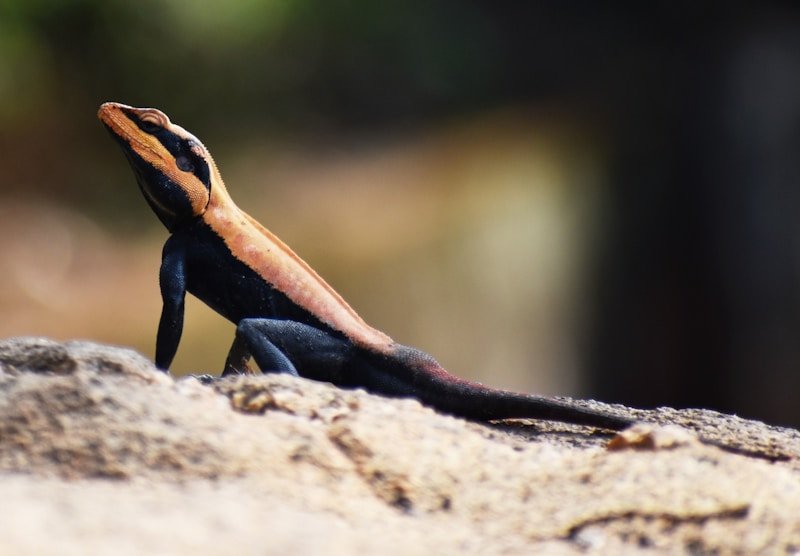Reptiles have fascinated humans for centuries with their scaly textures, slow deliberate movements, and ancient lineage dating back to the time of the dinosaurs. From desert-dwelling lizards to aquatic turtles, these cold-blooded creatures showcase an impressive range of adaptations and behaviors. In this visual guide, we explore the major types of reptiles, their unique physical features, natural habitats, and the importance of their role in ecosystems.
The Diversity of Reptiles
Reptiles make up a diverse class of animals scientifically known as Reptilia. This group includes turtles and tortoises, lizards, snakes, crocodilians (like alligators and crocodiles), and the lesser-known tuatara found only in New Zealand. What all reptiles share are key traits: they are cold-blooded (ectothermic), lay eggs (with some exceptions), breathe air through lungs, and have scaly skin that helps reduce water loss.
There are over 11,000 known reptile species, each adapted to specific environments ranging from rainforests to deserts and swamps. Lizards, the most varied group, range from tiny geckos the size of your finger to the massive Komodo dragon. Snakes, although legless, are highly efficient predators. Turtles and tortoises carry their protective shells wherever they go, while crocodilians have remained largely unchanged since prehistoric times, acting as apex predators in their environments.
Anatomy and Adaptations
Reptiles are evolutionary marvels with a number of specialized adaptations. One of the most striking features is their skin—covered in keratinized scales that prevent dehydration and offer protection from predators and the environment. Unlike amphibians, reptiles do not need to stay near water to keep their skin moist, allowing them to thrive in arid regions.
Their senses are well-developed: snakes, for instance, use their forked tongues to “taste” the air and locate prey using Jacobson’s organ. Many lizards can shed their tails to escape predators—a defense mechanism known as autotomy. Some reptiles, such as chameleons, have independently moving eyes and long, sticky tongues for capturing insects.
Temperature regulation is a unique challenge for reptiles. Being ectothermic, they depend on external sources of heat like the sun to raise their body temperature. That’s why it’s common to see them basking on rocks or lying motionless in warm areas.
Habitats Around the World
Reptiles are found on every continent except Antarctica, and they have evolved to inhabit a wide variety of environments. Desert reptiles, like horned lizards and sidewinder rattlesnakes, are built to conserve water and move efficiently on sand. Tropical reptiles, such as iguanas and tree boas, live among dense foliage and rely on camouflage for protection.
In aquatic environments, turtles and some snakes have adapted to swim efficiently, with features like webbed feet or paddle-like limbs. The saltwater crocodile, the largest living reptile, thrives in coastal waters across Southeast Asia and northern Australia.
Reptiles also play key roles in the balance of their ecosystems. As predators, they help control populations of rodents, insects, and other small animals. As prey, they provide food for birds, mammals, and even other reptiles.
Conservation and Human Impact
Despite their adaptability, many reptile species are under threat. Habitat destruction, climate change, pollution, invasive species, and the illegal pet trade have led to declining populations across the globe. Iconic species like the Galápagos tortoise and various sea turtles are listed as endangered due to human activity.
Conservation efforts are now underway in many parts of the world. Protected habitats, breeding programs, and public education campaigns aim to raise awareness about the importance of reptiles. Herpetologists—the scientists who study reptiles and amphibians—work tirelessly to understand their behavior, genetics, and ecological needs to better protect them.
People can also help by supporting sustainable practices, respecting wildlife laws, and avoiding the capture or purchase of wild reptiles. Reptiles are not just relics of the past—they are living, breathing indicators of environmental health and biodiversity.
Whether you’re fascinated by a lizard’s ability to climb walls or intrigued by a snake’s silent glide through underbrush, reptiles offer a remarkable glimpse into nature’s resilience and creativity. The more we understand these creatures up close, the more we appreciate their vital role in our natural world.

